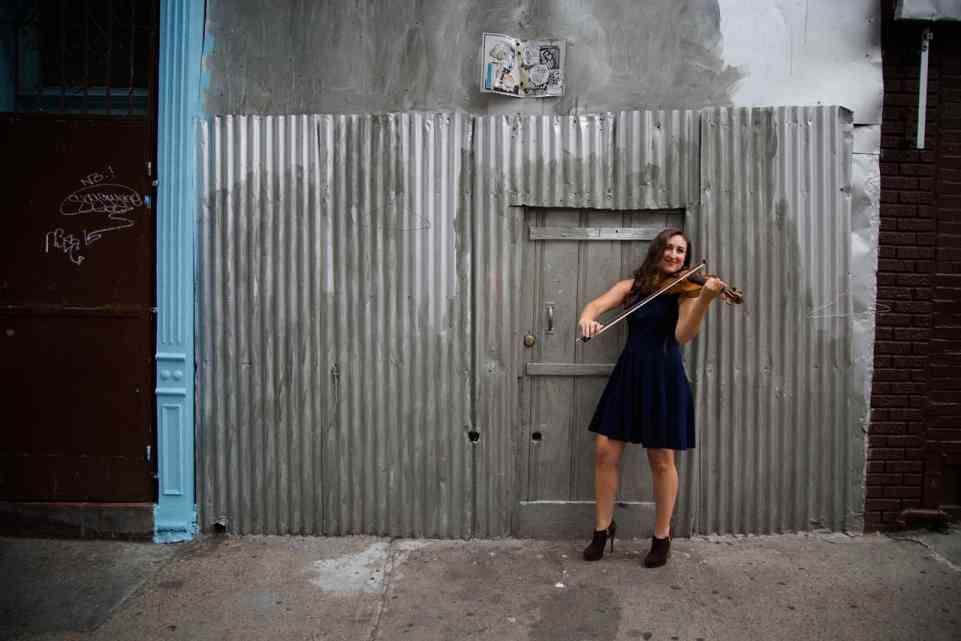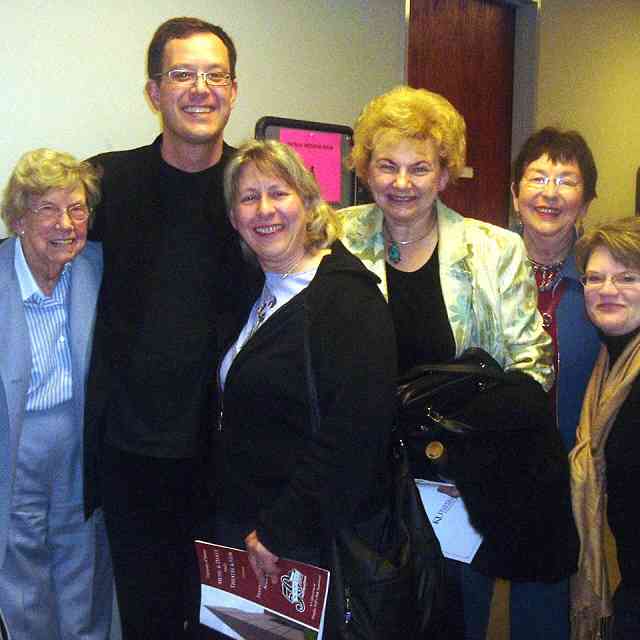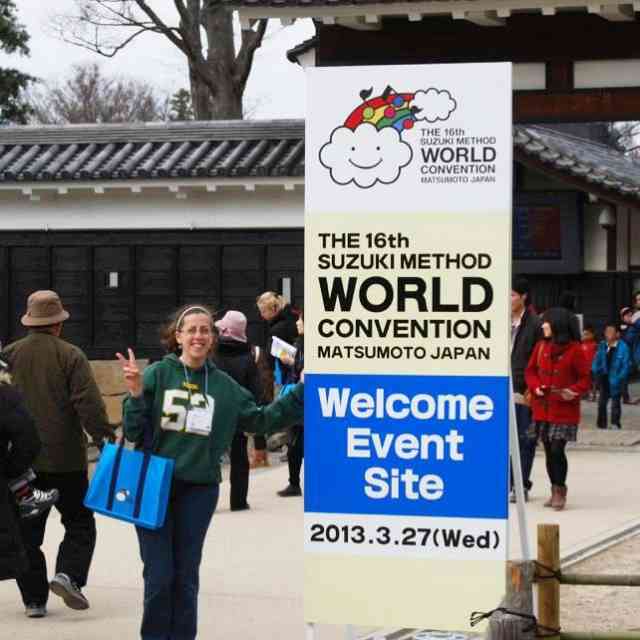Danielle Turano is a New York and Connecticut based performer, artist, and Suzuki Educator. Recently, the online blog and video project Jack’s Gap featured her in a short documentary. This documentary is part of a new series called Following Heart. The filmmakers spent a few days following Danielle around New York as she shared about her past, her dreams for the future, and the love of her students and teaching.
We had the opportunity to learn a little bit more about Danielle.
What brought you to New York City originally? Where did you move from?
I grew up in Wallingford, Connecticut, a small town about twenty minutes north of New Haven. Originally, I was brought to New York City when I was a little girl with my family. We always went to visit New York on the weekends, seeing the ballet, the museums, and the New York Philharmonic as well as the Easter and Thanksgiving Day parades. It was a place that I always loved to visit and one day hoped to live. Then about five years ago the band I had at the time was gigging a lot out of New York, and I finally took the plunge and moved into an apartment with my band mate. New York City is a place that has shaped who I am and will continue to shape my perspective on teaching, performing, music, and life.
In the video, we see you performing in the subway. How did that come about? Do you need a permit to perform in the subways in NYC? What is it like doing this?
The subway experience came about when Jack and Finn Harries, the directors of Jack’s Gap, came to New York and wanted to create the scene of the quintessential performer. Even Joshua Bell performed in the subway; I know we all watched that video! So we took the L train to Union Square, as I think that station symbolizes the melting pot that the city has always been: frantic, multi-cultural, and a place where everyone is equal. We found a perfect place in front of the 4-5-6 train on the Uptown track. It’s a visually perfect location with great symmetry between the green numbered signs, the stairwells flanking either side or the openness of a subway station. The only time you need a permit is when you are amplified, otherwise anyone is free to perform without amplification.
I think it is a humbling experience to perform in the subway. At first it feels a bit awkward because the subway is not a culturally defined performance space, where you come to watch people perform. In the subway you are, in a sense, creating a performance space in that moment. It is an unexpected place to perform, which makes it that much more exciting! A few winters ago I actually performed frequently in the subway because it is a great way to make some extra money, as well as gain valuable performance experience, along with bringing the joy of music to the masses. One day I was rehearsing in Washington Square Park around NYU, and I had positioned myself away from the pathways and walkways because I wanted to practice my performance just for my friend, but in a public space. Once I started playing I closed my eyes, and at the end of my performance I opened my eyes, and my friend was applauding along with a small group of people that had gathered to watch and listen. Then my friend handed me a dollar; she said a man had thrown it at me because I didn’t have a case open for him to place it in! I guess he really must have liked what he heard!

Danielle Turano
How do you balance your performing and teaching lives?
It takes a lot of flexibility to balance teaching and performing. My boss and my students are very understanding about when I have a gig in NYC on a teaching night. I work really hard to reschedule everyone so that it is as convenient as I can make it. I find that my performing really helps to open up my teaching and vice versa. When I perform I feel that rush of energy to help recharge myself when I have students. I love to bring my performance experience to the classroom. My teaching then does the same to my performance and my own personal practice. Right now I have been dissecting the techniques out of Vivaldi’s “Spring,” which I am preparing for an Easter performance. Once I analyze those techniques in my daily practice, I can superimpose those same techniques over Twinkle, or Go Tell Aunt Rhody, or Perpetual Motion. They make fabulous warm ups and challenge me to get creative with my own practice. I know this helps me be creative with my students in the challenges that they face and are looking to me for inspiration. Everything is cyclical and I think it’s important to keep the energy flowing. If you believe that you are meant to do both teaching and performing, then you should work to follow your heart.
Are you still working with Talent Education Suzuki School (TESS) in Norwalk, CT? Do you commute between there and NYC?
Yes, I am currently working at the Talent Education Suzuki School in Norwalk, and I teach part-time three days a week with a studio of eighteen wonderful students and their families. I also hold private lessons for those wanting to play mandolin, or work on their fiddling. I drive daily, commuting between Brooklyn and Norwalk. I am originally from Connecticut and I love going back to stay connected to my roots there. The commute is about one hour each way and lucky enough for me if I do not want (or cannot drive due to weather) I can always take the Metro North train from Grand Central in Manhattan. I see the commute as an opportunity to listen to music that I am working on, like Vivaldi. Podcasts have also become a part of the commute, specifically ones from the amazingly talented creative violin virtuoso Christian Howes. He currently has four podcasts on iTunes talking to some of the most creative minds in the violin business. The latest episode was about performance psychology. Christian talks in depth with Dr. Noa Kageyama and his experience about coming to realize that, after graduating with a degree in violin performance, that he came to feel that playing the violin was not his purpose.
In the video, you show proficiency with many differing styles. How did this come about?
I feel as a performer I always have so much to learn, especially about different styles of music. When I was growing up my mother always had me listen to classical music, so I am deeply in love and connected to classical music. But my father always had on his favorite music like Pink Floyd, Peter Gabriel, Cream, and other bands from the classic rock era. When I began studying ballet I was still listening to classical music and that was the main focus of my listening until the age of fourteen. When I continued to study the violin more seriously, my focus was on classical music but there was always this influence of pop and rock music. When I was finishing out my bachelor’s degree at The Hartt School of Music, where I studied with Anthea Kreston and Anton Miller, a few of my violin friends like current Berklee College of Music professor Jason Anick started to work on transcribing solos and playing in jazz bands. I became intrigued and began spending more time with different instrumentalists that allowed me to open up my ears to new kinds of music and styles of playing. So I began showing up to jam sessions, learning the melodies of jazz standards, and began listening to the legends of jazz. Then the summer after I graduated with my degree from Hartt, my friend (and incredible violinist) Ben Dean and I attended Berklee’s “String Fling” summer program in Boston. Here is where I was able to meet some of the creative and contemporary jazz legends of today, especially Christian Howes, Rob, Thomas, Matt Glaser, and Eugene Friesen. After that I was inspired to attend Christian Howe’s Creative Strings Workshop the following summer and realized there was no turning back from playing different styles of music with the violin technique I had developed from my classical training.
Tell us a little about the band you play with at the end of the video.
The band that I play with is called the Bianco Martinis. We are a band that was created out of the passion and love of vintage fashion, old-fashioned jazz music and ‘80s and ‘90s instrumental tunes, and the joy of performing everywhere! The scene that appears at the end of the documentary is our performance at a famous music venue called Rockwood Music Hall in the East Village in NYC. That tune we perform is called “Everybody Wants to Rule the World” by the ‘80s pop band Tears for Fears. I am a big fan of ‘80s and ‘90s music, as much of my generation is, because we have such nostalgia for our childhood. It’s a lot of fun to start this tune and watch for the audience’s reaction, the look of their face goes from interest to excitement, and we watch them access their past from deep down, connecting to feelings and memories. We are planning to release this track along with a few other instrumental arrangements of ‘80s and ‘90s tunes on iTunes at the beginning of 2015, with a portion of the proceeds going to the SAA to further support the education and mission of Dr. Suzuki’s vision for world peace.









Comments
Thank you for sharing the documentary “Following Heart”—it is not only really well done but really moving and inspiring! Beautiful!
Great video. Danielle Turano really symbolizes the quintessence of
“suzukiness” ; insight, modesty, energy, a love of life, and a readiness to share that love. Thank you for the music (and the video) !
1 posts
thank you, i loved it!!!!!